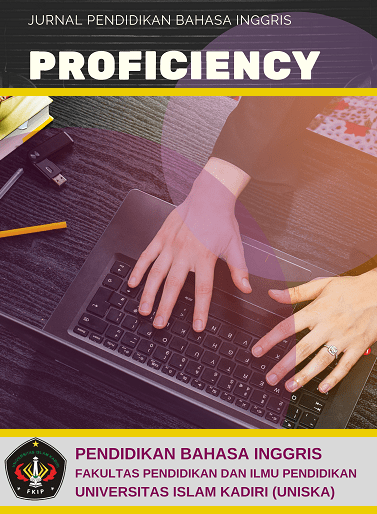THE EFFECTIVENESS OF USING WHOLE BRAIN TEACHING METHOD IN THE TEACHING OF SPEAKING
Abstract
Finding out how students communicate both before and after receiving instruction utilizing the whole brain teaching method is the aim of this study. The effectiveness of the whole brain teaching method in the Sibling English Course, as well as the notable difference in students' speaking abilities before and after instruction are both demonstrated. Because the outcome of this study is correlated with a numerical value that is derived quantitatively, a quantitative experimental design was adopted. Students in the foundational class of the Sibling English Course are the focus of this study. There are 20 pupils enrolled. Pre-test, treatment, and post-test were the three phases in the research process. (1) The research's findings indicate that students' speaking before receiving instruction utilizing the whole brain teaching approach falls between the "Fair" and "Good" categories, with an extent score ranging from 40–60 to 61–80. Value 68 is the greatest score, while 40 is the lowest. After using the whole brain teaching method, the students' speech falls into the "Good" to "Very Good" category, with an extent score ranging from 61-80 to 81-100. The minimum score is 76, and the maximum score is 92. (3) After adopting the whole brain teaching method, there is a noticeable difference in the speaking abilities of the students. The standard deviation is 5.394 in the post-test and 7.396 in the pre-test. Common Error The post-test mean is 1.206 and the pre-test mean is 1.654. (4) Students' speech improves when the whole brain teaching approach is used.
References
Asmayanti, S., & Amalia, R. (2014). Improving Students’ Speaking Ability by using Whole Brain Teaching (WBT) Method at The First Year Students’ of SMP Negeri 1 Baraka. Exposure Journal.3(1).72-87.
Biffle, c & Vanderfin, J. (2007). First Grade: Language arts Power Fix. (Online). Available at: hhttp://www.wholebrainteaching.com//docman/page-2.html). (February 24).
Biffle, C. (2013). Whole Brain Teaching for Challenging Kids. Whole Brain Teaching LLC. Brown, H. D. (2004). Language Assesment Principle and Clasroom Practice. Pearson Education.
Brown, H. Douglas. 2001. Teaching by Principles: An Interactive Approach to Language Pedagogy (Second Edition). San Francisco. Pearson Education Company.
Budianingsih, T. (2015). Peran Neurolinguistik dalam Pengajaran Bahasa. Jurnal Al Azhar Indonesia Seri Humaniora,3(2), 137-149. http://dx.doi.org/10.36722/sh.v3i2.203
Celce- Murcia, M. (2001). Teaching English as A Second or Foreign Language (3rd ed.). Heinle & Heinle.
Creswell, J.W.(2012) Educational Research: Planning, Conducting, and Evaluating Quantitative and Qualitative Research (4th ed.). Pearson Education.
Fulcher, G. (2003). Testing Second Language Speaking. New York: Pearson
Harmer, J. (2001). The practice of English language teaching (3rd ed.). Pearson Education Limited.
Harmer, J. (2007). The Practice of English Language Teaching (4th ed.). Longman. Mukrimah, S. S. (2014). 53 Metode Belajar dan Pembelajaran Plus Aplikasinya. Bumi Siliwangi.
Nutini, Liann. (2012). Whole Brain Teaching A New Way of Life. (online) available at: hhttp://www.canadianteacher.com//docman/page-2.html. (february 2, 2014).
Shalihah, S. (2014). Otak, Bahasa dan Pikiran Dalam Mind Map.Alfaz (Arabic Literatures for Academic Zeolots), 2(1), 185- 199.
Ur, P. (1996). A course in language teaching : Trainee book. Cambridge University Press.
Wolken, A. S. (2017). Brain-based Learning and Whole Brain Teaching Methods (Master’s thesis, Northwestern College. http://nwscommons.nwciowa.edu?educcation_master/43/.





























